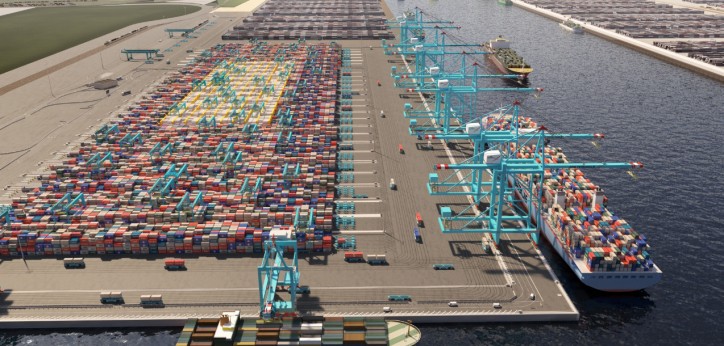APM Terminals’ newest terminal Maasvlakte 2 in Rotterdam, the Netherlands, is setting new standards for the terminal industry with its first remotely-controlled ship-to-shore (STS) cranes.

Image: portofrotterdam
A video released by ABB gives us a taste of the future which is expected to be dominated by unmanned machines, showed through the daily job of these remotely operated cranes. Lacking a driver’s cabin the remotely-controlled STS cranes, built by ABB CraneSystems, are run from a centralized control room.
The STS cranes are a product of the ever-growing shipping industry which saw the need to build taller cranes with wider reach, therefore increasing the travel distance of the trolley and the productivity of the cranes. According to ABB, these complex machines are manageable for operators and terminal logistic systems thanks to automation.
APM Terminals’ Maasvlakte II terminal, official opened by The Dutch monarch King Willem-Alexander on April 24, 2015, is the first fully-automated container terminal in the world and the first zero emissions container terminal in the industry. The terminal uses renewable energy from European wind farms as power source. In terms of safety, it is the first terminal designed to separate man and machine to achieve higher safety goals.
The 86 hectare (212 acre) deep-water terminal features 1,000 meters of quay, on-dock rail, and eight fully-automated electric-powered STS cranes, with a Phase I annual throughput capacity of 2.7 million TEUs, representing an APM Terminals investment of EUR 500 million.
Source: worldmaritimenews.com